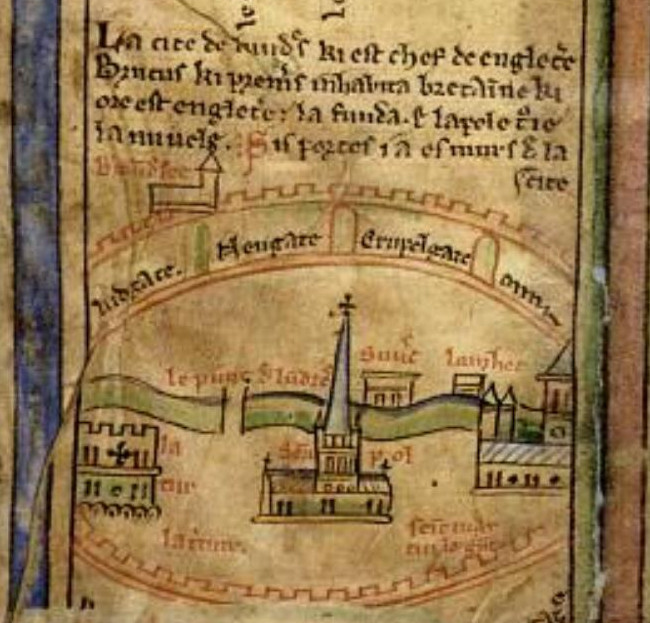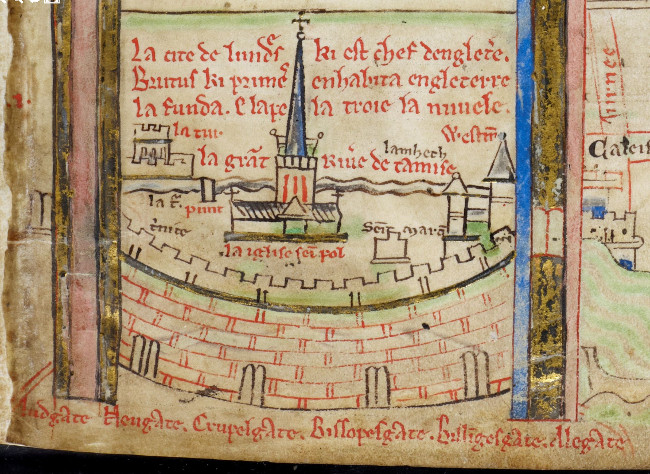Earliest View of London
Below are the earliest extant depictions of London. They are from the front matter of Matthew Paris’ Historia Anglorum and Chronica Majora written between 1250 and 1259. In both cases they are parts of strip maps showing pilgrimage routes from London to Rome and on to Jerusalem.
While the view is obviously very figurative, it nevertheless contains several interesting details that make it more than a simple iconographic representation.
The text is Anglo-Norman and reads: La cite de lundres ki est chef de engleterre. Brutus ki premere enhabita ngleterre la funda e lapela troie la nuvele, “The city of London is the principle city of England. Brutus who was the first inhabitant of England, founded and named New Troy.” The idea that London was founded by the Trojan Brutus is a legend first mentioned in the 9th-century but made most famous by Geoffrey of Monmouth in his Historia Regum Britanniae.
The city is shown to be walled with six named gates: Ludgate, Neugate (Newgate), Crupelgate (Cripplegate), Bissopesgate (Bishopsgate), Bilingesgate (Billingsgate) and Alegate (Aldgate.) It is situated along the banks of the Thames (le grat riue de tamise.)
Saint Paul’s Cathedral (la iglise sie pol) dominates the city. Other details (from left to right) include: la tur, the Tower; la punt, the bridge; trnite, i.e., la trinite, for Holy Trinity at Aldgate; across the river is shown lambeth, Lambeth; seit mara, Saint Martin’s la Grande; and finally Westm, Westminster.

London from Chronica Majora, MS 26, f.i R
The view from the Chronica Majora may be the older of the two images shown. It is somewhat more fanciful, showing the city wall as circular and extending beyond the south bank of the Thames, which of course it never did. It also only shows three, single-arched gates. The view from the Historia Anglorum shows six, although four are show in the walls, while two are squeezed in along the margin almost as a correction. They are also depicted correctly as double-arched.
The main text contains the additional sentence, Sis portes i a es murs e la seit, “Six gates are in the walls along with a seventh.” Suzanne Lewis, in her book, The Art of Matthew Paris in the Chronica Majora, indicates that this reference to a seventh gate may either be a postern gate north of the Tower, or a barbican built outside of the Aldgate.
The Chronica view additionally includes a reference to Birmundsee, Bermondsay, outside the wall, and Suuerc, Southwark, on the south bank, but omits the Historia’s explicit reference of Westminster.


